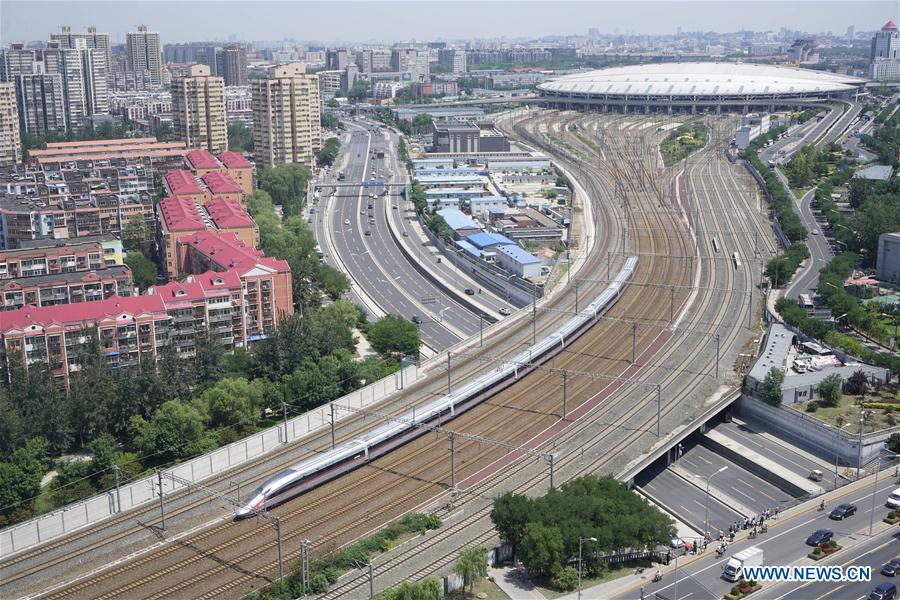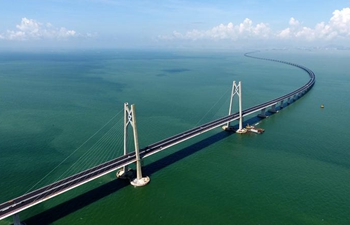
China's new bullet train "Fuxing" departs from Beijing South Railway Station in Beijing, capital of China, June 26, 2017. The new bullet trains, also known as electric multiple units (EMU), boast top speeds of 400 kilometers an hour and a consistent speed of 350 kilometers an hour. China's annual political sessions of the National People's Congress (NPC) and the National Committee of the Chinese People's Political Consultative Conference (CPPCC) are scheduled to convene in March, 2018. During the two sessions, development agendas will be reviewed and discussed, and key policies will be adopted. Year 2018 marks the first year of fully implementing the spirit of the 19th National Congress of the Communist Party of China, in which innovation has been labeled as the primary driving force behind development and the strategic underpinning for building a modernized economy. (Xinhua/Xing Guangli)
BEIJING, Feb. 27 (Xinhua) -- The Chinese people were inspired by the famous calling: "Science and technology are primary productive forces" three decades ago, and have now promoted innovation to achieve continuous development.
Unsatisfied with being the world's factory, China's leaders on various occasions have called on the country to transform from a "Made in China" to a "Created in China" model, with innovation clearly playing an important role.
In October 2017, a report at the 19th National Congress of the Communist Party of China stressed that innovation was the primary driving force behind development.
Over the past few years, the Chinese have been inspired by the country's landmark achievements in science and technology. China successfully cloned macaques from somatic cells, launched the world's first quantum satellite and quantum experiments at space scale, and created the world's fastest supercomputers Sunway TaihuLight and Tianhe-2.
The list goes on and on, and the innovation progress does not stop at national level. Chinese innovators are also changing people's everyday lives.
Every minute during the morning rush hours, China has 40,000 car-hailing journeys; 70 percent of Chinese mobile netizens are using mobile payment, and China is now the world's largest online shopping market.
Dockless shared bicycles, high-speed trains, mobile payment and e-commerce have earned a reputation as China's "four great new inventions" in modern times.
These innovations have reshaped the way of living in China. And now they are entering foreign markets.
Two leading Chinese bike-sharing companies ofo and Mobike are competing in Singapore, Britain, Italy, the Netherlands, the United States and the Republic of Korea. GCash, a Philippine mobile wallet service provider for conducting payment and money transfer, resembles China's Alipay established by e-commerce titan Alibaba Group.
There were 3.87 million scientists and researchers across China in 2016.
China has set the aim of becoming an "innovation nation" by 2020, an international leader in innovation by 2030, and a world powerhouse in scientific and technological innovation by 2050.
Cities nationwide are also joining the race. Southwest China's Guiyang City, a pioneer of the application of big data technology, decided to use cloud computing to develop modern agriculture. Shenzhen in southern China, the pioneer city in innovation for the past 40 years, has set the goal to become a world-class sustainable innovative city by 2035.
The Global Innovation Index has shown that China rose three places to 22nd on the list of the world's most innovative nations in 2017, the only middle-income country to join the top 25 innovative economies.















